
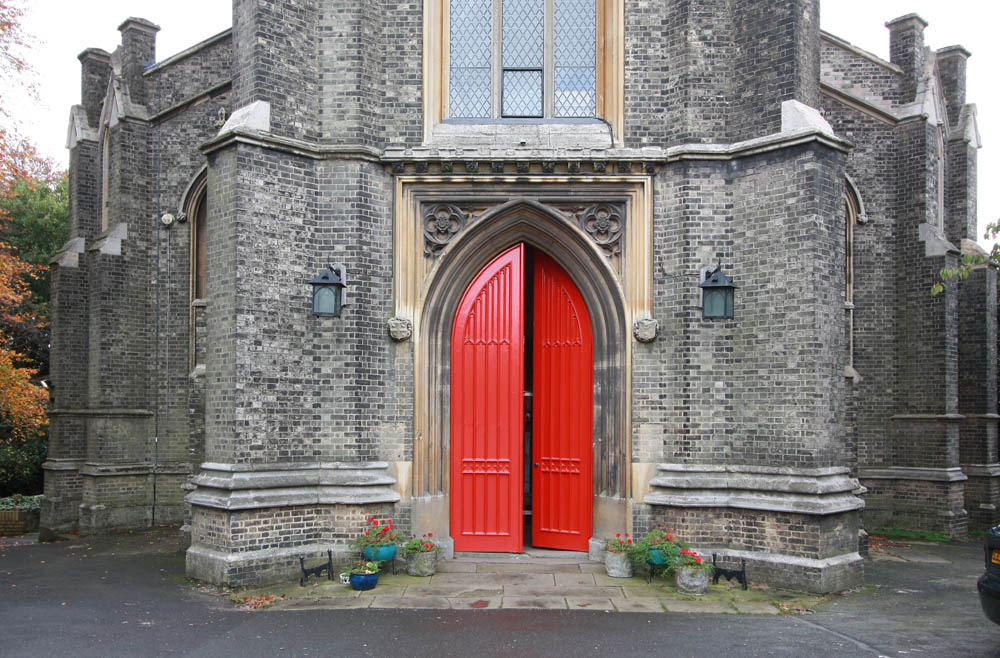
The parish church of St Michael, Highgate, was a Commissioners' Church designed by Lewis Vulliamy, and built quickly and economically in 1831-32. But it also has later work by G.E. Street (1879-81) and Temple Moore (1903). Considered "large and ambitious" for its period (listing text), it is important because of its proximity to Highgate Cemetery, its talented architects, and, in the end, its fine interior decoration, and is therefore Grade II* listed. Dickens mentions it in Chapeter XXXVI of David Copperfield, when the hero, visiting that part of Highgate to woo his future child-wife Dora, notes that "[t]he church with the slender spire that stands on the top of the hill" was not there yet to tell him the time. It certainly stood out later on the north London skyline: "supported by flying buttresses, [the spire] is a landmark for miles, and on fine days can be seen from Gower Street. The church stands so high that the floor is level with the cross on St Paul's" (Mee 576). Of course, the spire may not be so visible now, in the London of skyscrapers.
The church was built on the site of an old mansion, south of the even older hermitage chapel here — which itself was rebuilt in 1860 as a school. Planned to accommodate a much larger congregation than the chapel, numbering around 1500 worshippers, St Michael's was constructed by William and Lewis Cubitt, Thomas Cubitt's younger brothers, in stock brick with Bath and Portland stone dressings, for the moderate sum of £8,171 (listing text). The prominent building then became a significant part of the view from Highgate Cemetery, which was laid out from 1836 with exactly that in mind.
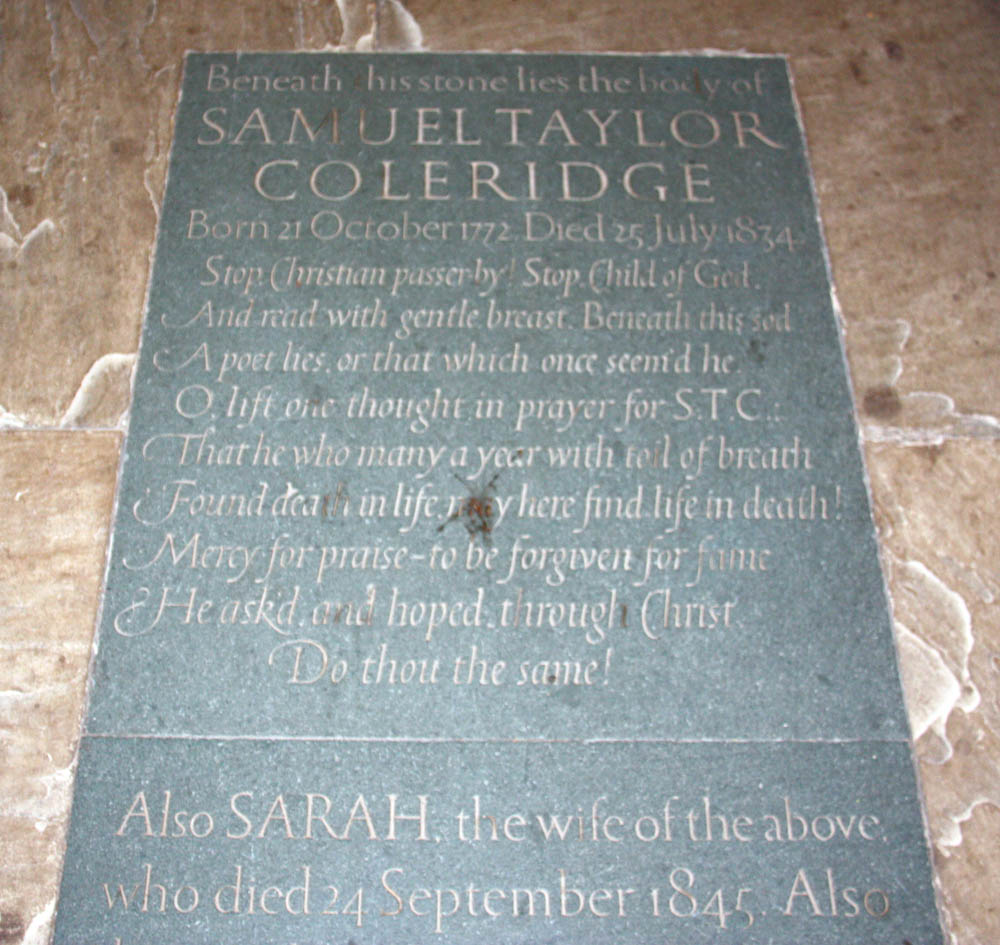
Memorial stone to Coleridge, who had lived opposite the church, in the central aisle.
The church is of particular interest to students of literature: the remains of Samuel Taylor Coleridge, who had been buried in the old burial ground nearby, were later brought over and re-interred here, and his memorial stone was unveiled at the same time, with the poet John Masefield giving the address ("History of St Michael's"). More recently still, the exact location of the five coffins of Coleridge and his family, that is, his wife, daughter, son-in-law and grandson, were all found at the back of the crypt, in what used to be the wine cellar of the original old mansion (see Banks).
As for the church's interior, despite the fact that, as Roger Bowdler puts it, Vulliamy "established a reputation for his Gothic churches," only the exterior struck a contemporary Gothic Revival note. Inside were old-fashioned galleries and box pews, and too rudimentary an east end. This is where G.E. Street came in, putting in open pews, shortening the galleries (although Nikolaus Pevsner still calls them "poor," 362), raising the eastern part of the nave, providing a chancel before the sanctuary, and a new east wall. At this stage the church acquired its fine new five-light window with Perpendicular tracery. In 1889, stained glass by the designer C.E. Kempe depicting "The Tree of Life" was installed in it, but it was damaged in the war and replaced by a contemporary "Last Supper" window in the mid-1950s. However, Kempe's magnificent figures for it were skilfully reset to produce the "prophets" window for the north aisle chapel, complementing Kempe's window of St Michael slaying the dragon in the south aisle chapel (see Eberhard).
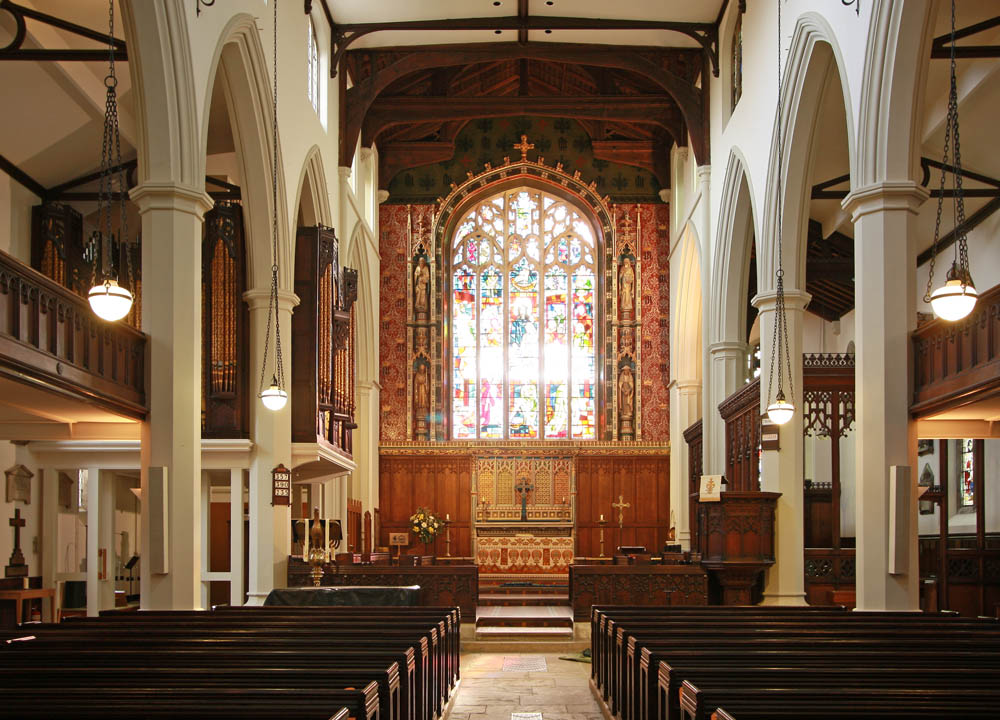
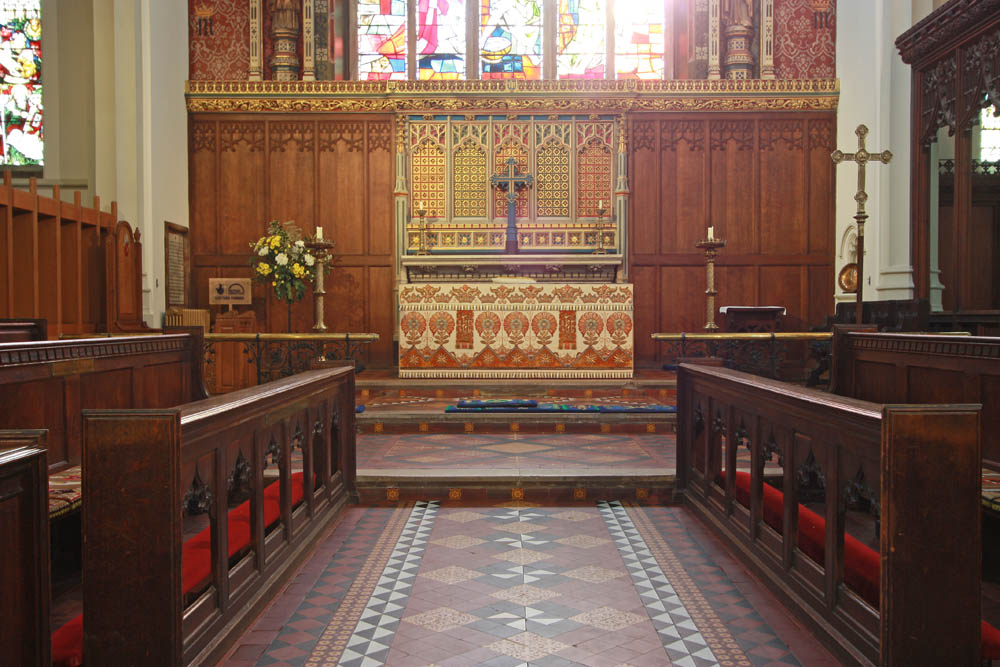
Left: Looking east along the nave to the sanctuary. Right: The chancel with its oaken choir stalls, and the sanctuary with its painted stone reredos.
The fittings mostly belong to Street's era — all this, while he was, sadly, working himself to death Royal Courts of Justice. On the church's reopening in February 1881, after his improvements, the Illustrated London News announced, "The parish church of St. Michael, Highgate, having undergone improvement and enlargement, was reopened on Saturday afternoon, when the new portions of the building were consecrated by the Bishop of London, in the presence of a large congregation. A new chancel and vestry have been provided, at a cost of about £3000." According to the listing text, the organ with its splendid gilded pipes dates to 1885, though it has been through later rebuildings.
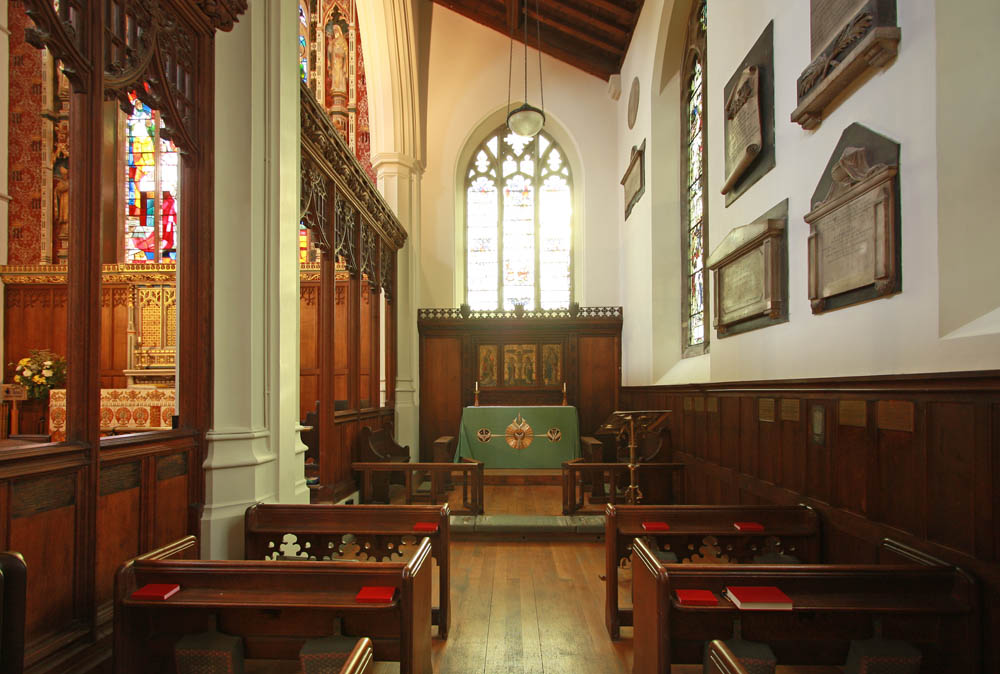
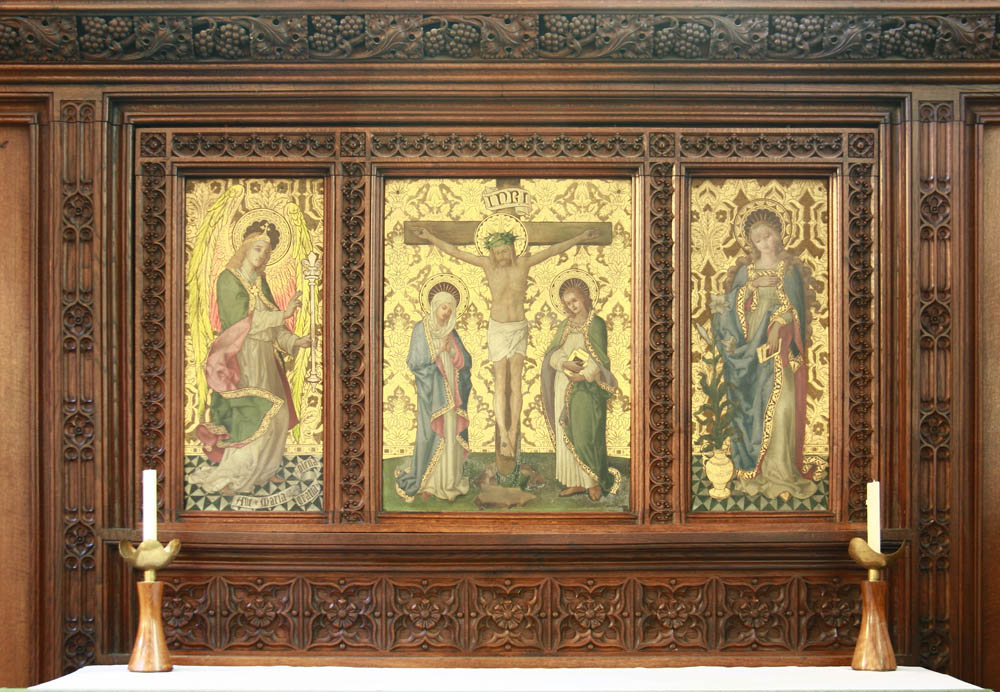
Left: The South Chapel in the east. Right: The reredos here.
Slightly outside the Victorian period, Temple Lushington Moore (1856-1920) made further improvements, adding "the present statuary and stencilled decoration" in the sanctuary and creating the south aisle chapel, by screening off the top end of the south aisle, as shown on the left above (see listing text). Much closer to our own times, in 2011, the west end of the church was also reordered (see below right).
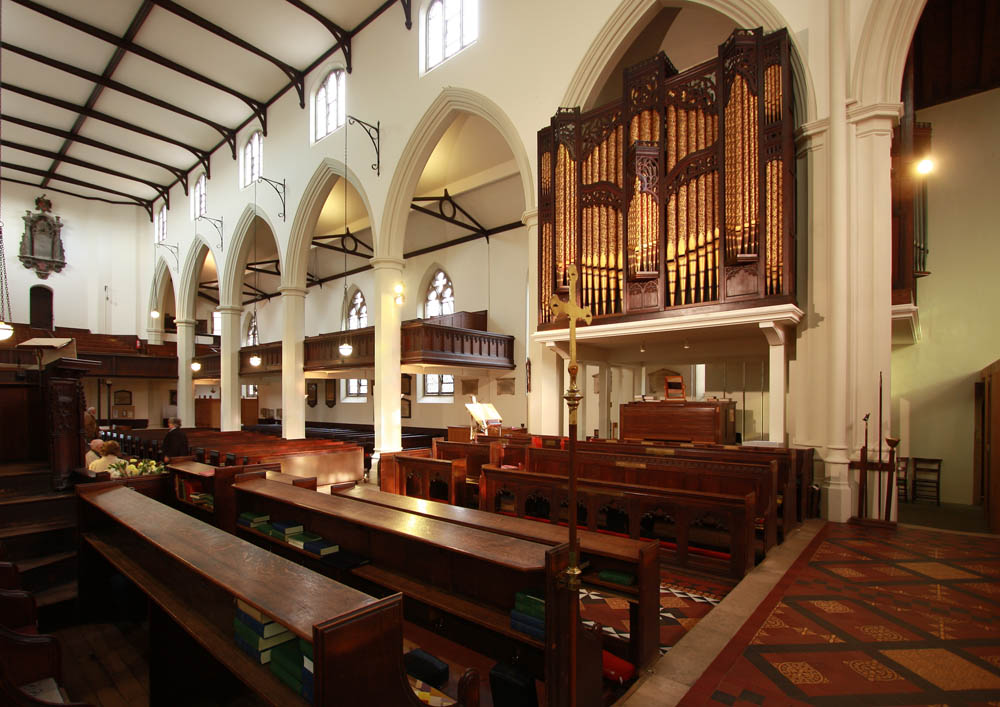
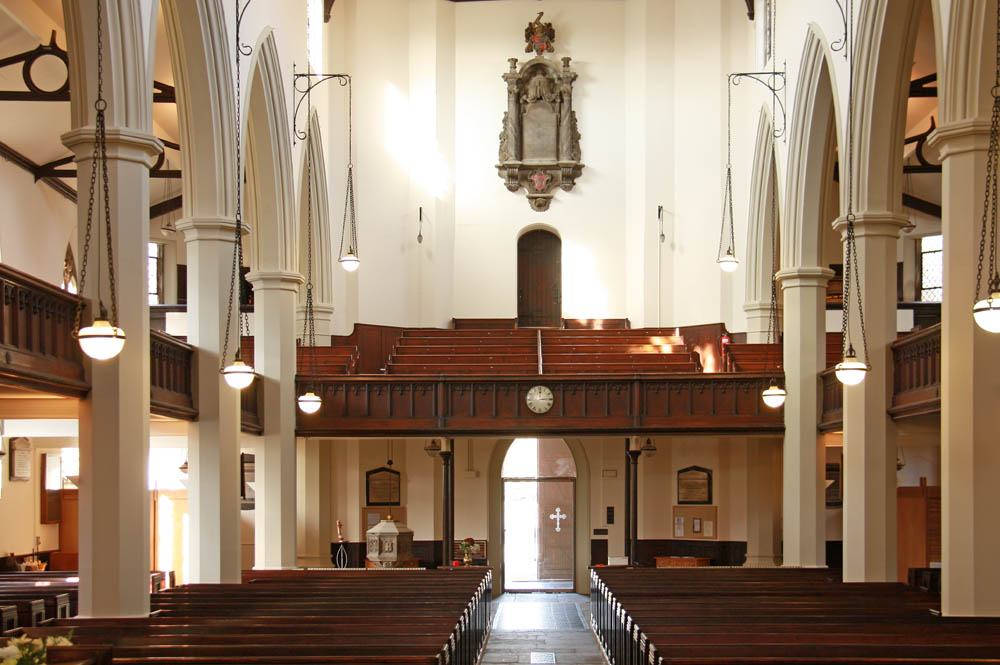
Left: Looking across the width of the church to the north aisle. Right: West end of the church.
You may use these photographs without prior permission for any scholarly or educational purpose as long as you (1) credit the photographer and (2) link your document to this URL in a web document or cite the Victorian Web in a print one. Click on all the images to enlarge them.
Link to Related Material
Bibliography
Banks, Emily. "Grave of literary giant Samuel Taylor Coleridge found in wine cellar under St Michael’s Church in Highgate." Ham&High (12 April 2018). Web. 5 July 2025.
Church of St Michael. Historic England. Web. 5 July 2025.
"The Church: Preferments and Appointments." Illustrated London News Vol. 78 (5 February 1881): 139. Internet Archive. Web. 5 July 2025.
Eberhard, Robert. "St Michael [sic] Church." Church Stained Glass Windows. Web. 7 July 2025.
"History of St Michael's Highgate" (church's own website). Web. 5 July 2025. https://stmichaelshighgate.org/about/history/history-of-st-michaels-highgate/
Mee, Arthur, ed. The King's England: Surrey: London's Southern Neighbour. London: Hodder and Stoughton, 1938.
Created 5 July 2025